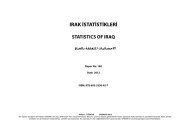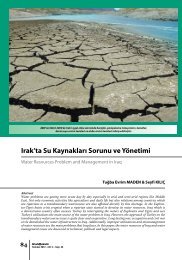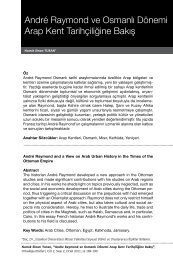30 July - 5 August 2012 - orsam
30 July - 5 August 2012 - orsam
30 July - 5 August 2012 - orsam
You also want an ePaper? Increase the reach of your titles
YUMPU automatically turns print PDFs into web optimized ePapers that Google loves.
Monsoon, or later<br />
A looming drought is manageable. Long-term changes to the monsoon might be<br />
THE dizzying midday heat of India‘s northern plains cracks the earth. Farmers slump on the<br />
charpoys on which they sleep outdoors. It should be raining, yet the sky is clear. Prithi Singh, lean<br />
and wrinkled, says his entire rice crop has withered, along with fields sown for fodder.<br />
After two summers of erratic and delayed monsoons, this year the rains simply failed. Mr Singh<br />
cannot afford to pay for a borehole, generator and diesel to reach ever-diminishing groundwater.<br />
Farmers always grumble. But Mr Singh has lost half of his annual income of 50,000 rupees ($890)<br />
and now depends upon his crop of winter wheat. Another farmer nearby fears he must sell his land to<br />
pay accumulated debts to moneylenders.<br />
The monsoon months, June to September, bring three-quarters of India‘s annual rainfall. Official<br />
studies show it to be erratic in four out of every ten years. Yet farmers rarely get any useful warning<br />
of shortfalls. As recently as late June, India‘s meteorologists were predicting a normal monsoon.<br />
Punjab and Haryana, two north-western agricultural states, now say rains are about 70% below<br />
average. Six western states have issued drought warnings. The government in Delhi says it may soon<br />
offer emergency help.<br />
The country remains predominantly rural: over 600m out of 1.24 billion Indians rely directly on<br />
farming. Nearly two-thirds of Indian fields are fed only by rain. A one-off drought is tolerable. Rural<br />
job-creation schemes have lifted incomes for the poorest. Food prices have only started to creep up.<br />
Granaries are overflowing, thanks to recent bumper crops.<br />
What is disturbing, though, are tentative signs of long-term change to the summer rains. A less stable<br />
monsoon pattern would be harder to predict. It would arrive late more often, yield less water, become<br />
more sporadic, or dump rain in shorter, more destructive bursts (which happened two years ago in<br />
Pakistan, where the Indus basin disastrously flooded). The concerns of experts about the monsoon<br />
long predate today‘s dry spell.<br />
Page 58
















